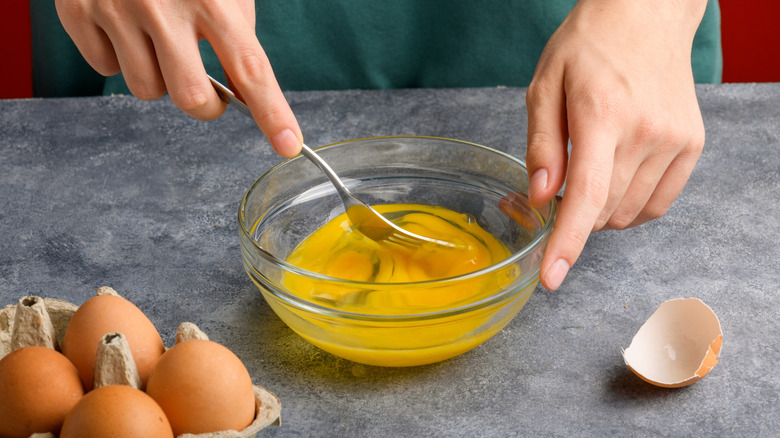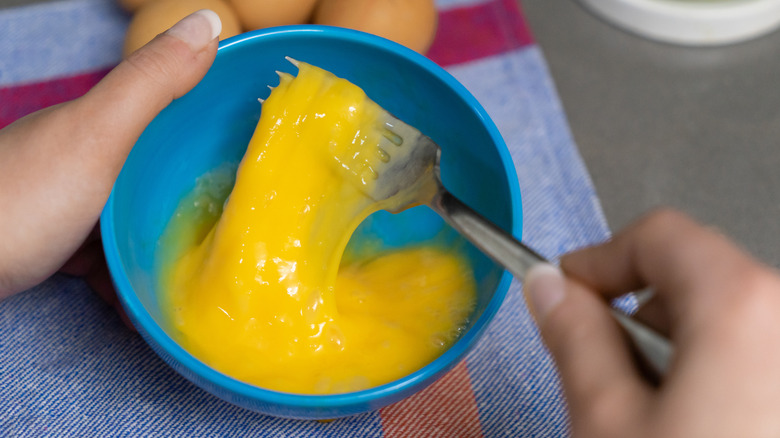Why You Should Use A Fork When Scrambling Eggs
There are many different tips for making restaurant-quality scrambled eggs, and a lot comes down to personal preference: whether you prefer them soft and creamy or light and fluffy, enriched with butter, or mixed with cheese. You can even make scrambled eggs into a gourmet dish with one ingredient: truffle. But you may not have realized that the utensil you use to beat them actually has a significant impact on the texture of the final result. And for cloud-like, fluffy eggs, a fork is better than a whisk.
The purpose of beating eggs is to mix the yolks and whites — and to aerate the eggs. Incorporating more air makes them lighter and fluffier — it's why using a blender produces the fluffiest scrambled eggs of all. But if you over-beat the eggs and add too much air, they start to become more creamy rather than fluffy, and can even turn rubbery when cooked. When whisked, the protein within the eggs begins to form a network that traps the air — but as more air gets trapped, the proteins bond more tightly. These tighter bonds push the water away, and less moisture can mean drier, grainier eggs.
It's easier to control how much air is beaten in when using a fork rather than a whisk, as the latter can break down the eggs too much. The aim is just to beat them until the yolks and whites are fully combined, with no separate streaks visible.
Scramble the eggs in a separate bowl
It can be tempting when making scrambled eggs to just break them directly into the pan and start whisking, as it means fewer pots to wash up. But there are a couple of risks with this method. There's a chance you'll get bits of shell in the eggy mixture, and you're more likely to end up with streaky eggs rather than soft, fluffy ones. Instead, it's better to break the eggs into a separate bowl and beat them in that before adding them to the pan.
Crack the eggs onto a flat surface such as a countertop or cutting board rather than using the edge of the bowl — and don't use the edge of the countertop to crack eggs, either, as you're more likely to get little fragments of shell in the mix. The flat surface technique is also the first step if you want to learn how to crack an egg with one hand. Use a side-to-side motion with the fork to beat the eggs, and add a little extra liquid such as milk or cream if you like.
Once the eggs are whisked, cook them straight away, because letting the mixture sit around for too long means the fluffy aerated eggs can start to deflate. Choose a nonstick saute pan or skillet when cooking the scrambled eggs as it means they won't stick — and use a silicone spatula to avoid scratching it.


